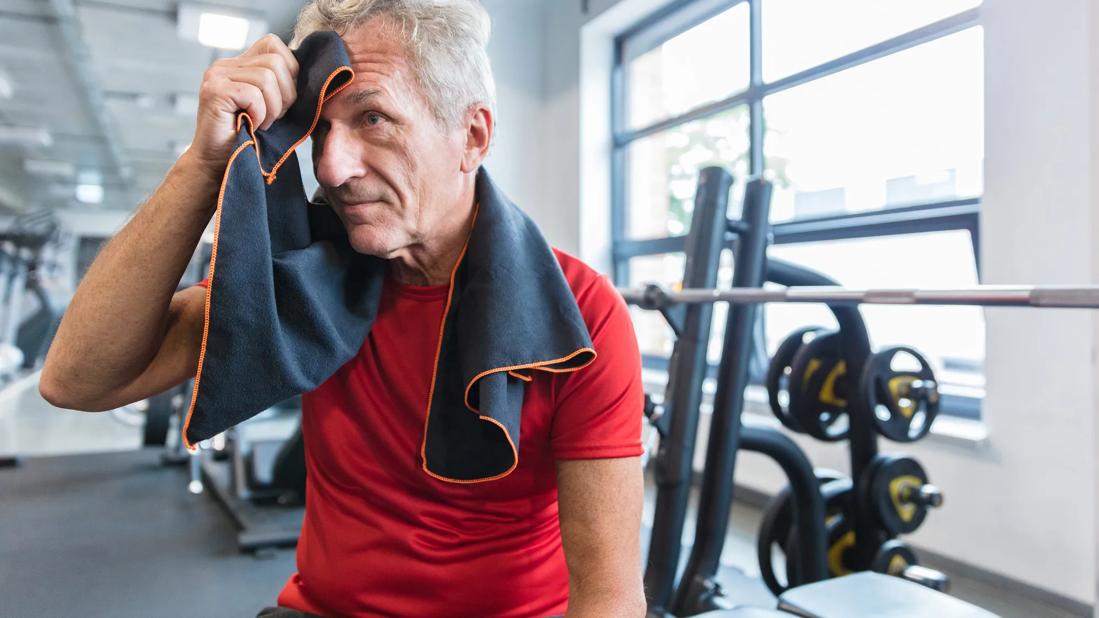Nurse-led team creates successful interventions

A few years ago, Cleveland Clinic Marymount Hospital began pursuing certification of its cardiopulmonary rehabilitation program through the American Association of Cardiovascular and Pulmonary Rehabilitation (AACVPR). “When we started down the path to certification, we began looking closely at patient outcomes,” says Amy Cunningham-Mays, BSN, RN, a clinical nurse in Marymount Hospital’s cardiac rehabilitation program. “We realized we had an issue with our functional capacity outcomes.”
Advertisement
Cleveland Clinic is a non-profit academic medical center. Advertising on our site helps support our mission. We do not endorse non-Cleveland Clinic products or services. Policy
A review of 4Q 2017 cardiac rehab patients indicated that only 38.5% had achieved an improvement in functional capacity of at least 40% as measured by metabolic equivalent (MET) levels. MET is a ratio of a person’s metabolic rate during any given activity relative to their resting metabolic rate. The AACVPR considers an increase of METs by at least 40% as a clinically significant improvement. A multidisciplinary team of caregivers in the cardiac rehabilitation program launched an initiative in 2018 to improve functional capacity by 40% or more in at least 75% of its patients.
Cunningham-Mays worked on the project with another clinical nurse, the nurse manager, an exercise physiologist and a respiratory therapist. “We began by looking at what we were doing as a team and what we needed to start doing to improve our patients’ functional capacity,” she says. “The team effort was important to make this work – getting everyone’s input based on their area of expertise and skill set.”
Based on a literature review, conversations among the team and consideration of the patient population that uses Marymount Hospital’s cardiac rehab program (mostly elderly), the team implemented a three-pronged approach to improving functional capacity.
Advertisement
“After we started doing these three things, we looked at our MET numbers again,” says Cunningham-Mays. “We had an excellent response!” During 4Q 2018, 62.5% of cardiac rehab patients had improved their functional capacity by 40% or more. In 2019, an average of 76% of patients increased their functional capacity by 40% or more, surpassing the goal the team set at the outset of the project.
During 2020, most patients’ fitness levels declined, says Cunningham-Mays. The cardiac rehab program was closed from mid- March through mid-June because of COVID-19, and many patients remain uncomfortable going to a local gym. But Cunningham-Mays is optimistic that patients are now beginning to “get back into the exercise groove.”
Involving patients in the creation of fitness goals and encouraging them to increase their activity has improved overall patient experience with cardiac rehab. “The patients like being in charge of their own exercise and being held accountable,” says Cunningham-Mays. “It empowers them.”
The cardiac rehab program has also benefitted from improved outcomes. Marymount Hospital was named a Certified Cardiac Rehabilitation Program by AACVPR in August 2019, becoming one of 19 Cleveland Clinic facilities to earn certification for cardiovascular or pulmonary rehab programs from the association.
“Once we realized we had a problem with functional capacity levels and utilized everyone’s area of expertise to solve the problem, the whole puzzle came together,” says Cunningham-Mays.
Advertisement
Advertisement

Compassion, communication and critical thinking are key

Study illuminates value of shared decision-making

How hospitals can weave ethics into daily nursing practice to strengthen patient-centered care

Mobility carts provide exercises and tools

Nurse researchers explore the relationship between readmission risk scores and acute care transfers

Guiding nurses amid a constantly evolving healthcare landscape

Ideation session generates solutions to medication administration errors

Caregivers spearhead changes that improve patient care, shape hospital culture